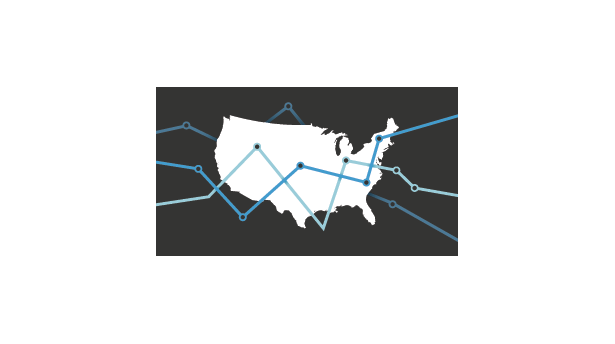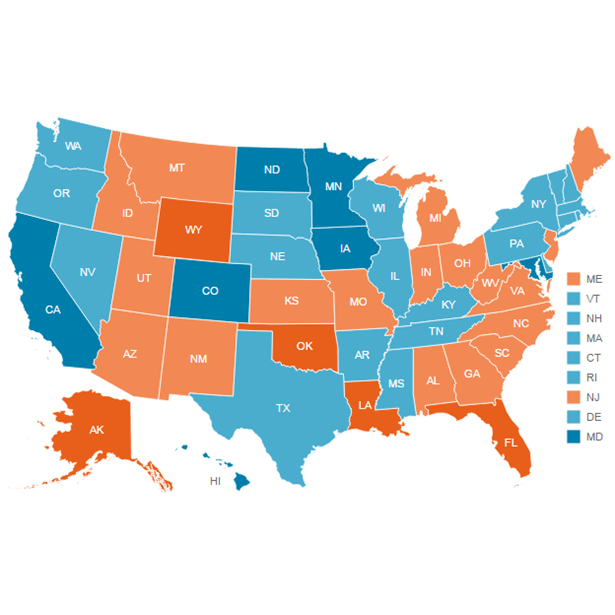Most States' Reserves Remain Short of Prerecession Levels
Note: These data have been updated. To see the most recent data and analysis, visit Fiscal 50.
States have made halting progress in rebuilding their financial cushions since the Great Recession. Overall, states had enough money in general fund budget reserves in fiscal year 2007—just before the economic downturn—to run government operations for a median of 41.3 days. That compares with 25.9 days in fiscal 2014 and early estimates of 20.5 days in fiscal 2015.
For many states, even prerecession reserve levels were inadequate to plug huge budget gaps that opened as a result of the 2007-09 recession. Still, just 17 states in fiscal 2014 could cover more days’ worth of operating expenses with their reserves—counting both rainy day funds and end-of-year balances—than they could before the recession, according to data collected by the National Association of State Budget Officers (NASBO). Midway through fiscal 2015, which ended June 30 for most states, only 14 states projected that their reserves would top prerecession levels. Final data for fiscal 2015 were not yet available.
Since dropping in the recession, states’ financial cushions in aggregate have improved largely because of growth in rainy day funds rather than in end-of-year balances, which have been more volatile. States’ rainy day funds—sometimes known as budget stabilization funds—totaled $47.2 billion in fiscal 2014, held more nominal dollars than before the recession, and could cover a greater share of day-to-day government expenses than in any year since at least fiscal 2000. Meanwhile, states’ end-of-year balances, totaling $24.3 billion in fiscal 2014, were lower than at their prerecession peak, measured in both dollars and as a share of expenses.
Declines in fiscal 2014 and 2015 in the median number of days that states could operate just on their reserves were caused by a dip in general fund ending balances. An ending balance is the amount left at the end of a fiscal year in what functions as a state’s main checking account, making it sensitive to year-to-year changes in revenue and spending.
Fiscal 50’s state-to-state comparisons are based on the latest revised results for fiscal 2014, because fiscal 2015 data are estimated and are highly likely to change once states officially close their books. In recent years, final figures have been higher than estimates, given that it is difficult for states to pinpoint ending balances before all of their bills are paid and revenue is collected. Estimates also were made before a number of states had unexpected windfalls in personal income tax collections for April 2015 that may increase their balances.
According to states’ results for fiscal 2014:
- Alaska (692.0 days) had the largest reserves as a share of operating costs, though the state’s financial cushion has fallen each year since fiscal 2011 because of budget pressure caused by declining crude oil revenue. Even after lawmakers drew down about a third of the state’s rainy day funds to shore up retirement accounts and cover a budget shortfall in fiscal 2015, Alaska’s reserves still were expected to cover more days’ worth of spending than those of any other state.
- Five other states also had more than 100 days of operating costs in reserves: Wyoming (189.1 days), North Dakota (188.4 days), Nebraska (134.1 days), West Virginia (118.7 days), and Texas (106.7 days).
- The smallest reserves—less than five days’ worth of operating costs—were in Arkansas (0 days), Pennsylvania (1.0 days), New Jersey (3.5 days), and Illinois (4.1 days).
- Four states’ reserves could cover more days’ worth of operating costs than at any point since at least 2000: Nebraska (134.1), Rhode Island (33.6), South Carolina (67.1), and Texas (106.7).
- For the second straight year, no state expected its reserves and balances to drop below zero. After the recession, Arizona, California, Connecticut, Kansas, Oregon, Pennsylvania, and Washington emptied their reserves in at least one year, requiring them to borrow or transfer cash to cover operating costs.
- The 17 states where reserves were higher than prerecession levels relative to operating costs were Alaska, Arizona, Colorado, Hawaii, Indiana, Iowa, Michigan, Nebraska, North Dakota, Ohio, Rhode Island, South Carolina, Texas, Vermont, West Virginia, Wisconsin, and Wyoming.
States use reserves and balances to manage budgetary uncertainty, deal with revenue forecasting errors, prevent severe spending cuts and tax increases, and cope with unforeseen emergencies. Building up reserves and balances is a sign of fiscal recovery, but there is no one-size-fits-all rule on when, how, and how much to save. States with a history of significant revenue or economic volatility may desire larger cushions. Because reserves and balances are vital to managing unexpected changes and maintaining fiscal health, their levels are tracked closely by bond rating agencies.
This measure does not take into account additional resources that some states may have available to soften downturns, such as dedicated reserves outside of their general funds or rainy day accounts, so it may not reflect a state’s complete fiscal cushion. For example, Wisconsin’s budget documents show that the state ended fiscal 2015 with a balance of about $280 million in a budget stabilization fund; however, the state historically has not reported sums from that account to NASBO. In addition, some states undertake considerable spending outside of the general fund, so comparisons across states should be made with caution.
Download the data to see individual state trends. Visit The Pew Charitable Trusts’ interactive resource Fiscal 50: State Trends and Analysis to sort and analyze data for other indicators of state fiscal health.








